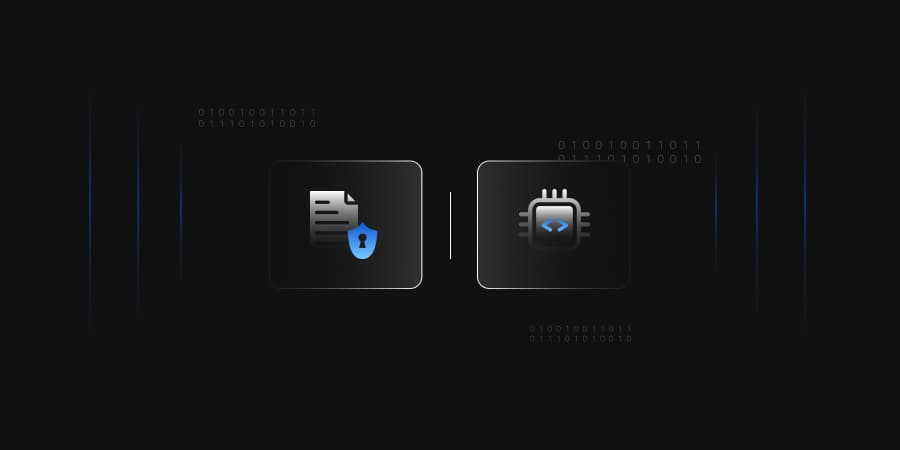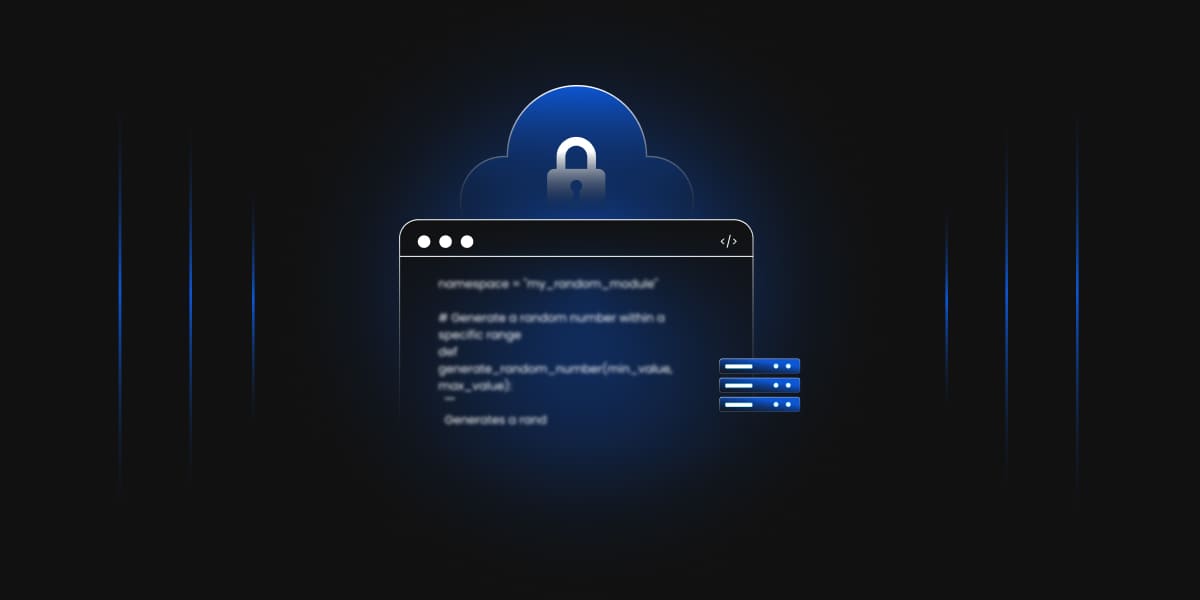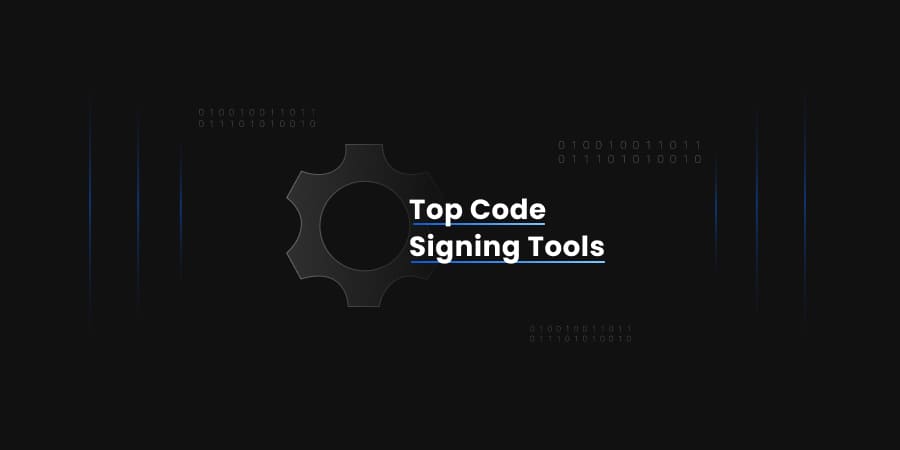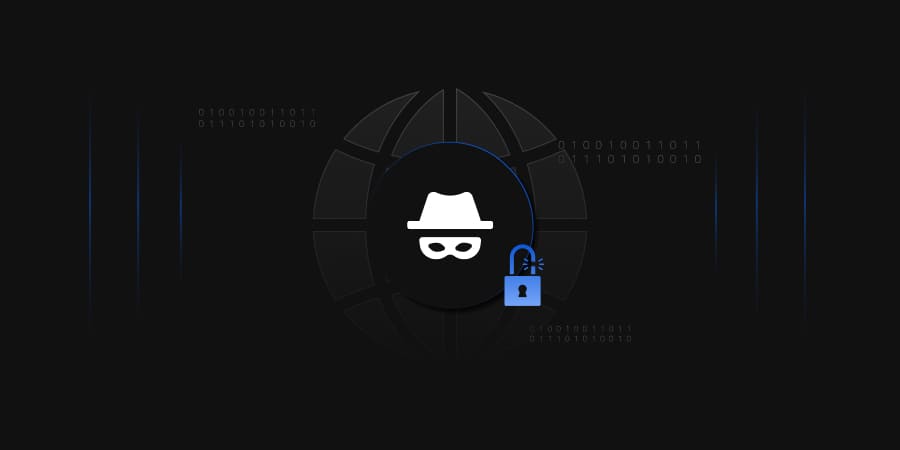PKI is the backbone of organizations’ security architecture, ensuring a smooth functioning of encryption, authentication, and secure communication over the internet. The efficient and secure working of such a complex system requires continuous monitoring and assessment. That’s where a PKI audit comes to the rescue to guarantee that your PKI infrastructure can combat the rising threats that continue to become more advanced and meet the constantly changing criteria of regulations and compliances.
Importance of PKI Audit
A PKI Audit is a necessity in a time like now. This strategic move helps to assess the current environment for security gaps. It ensures alignment with all the necessary business drivers and PKI requirements, serving as a proactive step towards enhancing your security posture and meeting all the compliance requirements.
A detailed gap analysis as part of a PKI Audit provides a comprehensive overview of all your PKI service domains. This includes governance, system architecture design, operations, risk and compliance monitoring, and certificate lifecycle management. This thorough examination ensures that no aspect of your PKI is overlooked, giving you a clear understanding of your security landscape.
You get the opportunity to compare the maturity of your PKI environment against a defined framework and comparative organizations and review the security controls, fostering a sense of competition and motivation to improve.
Why Get PKI Audit?
-
Vendor Reliance and Lock-in
A PKI Audit reveals your PKI infrastructure’s dependency on vendors to assess reliability and mitigate the risks of lock-in. Lock-in can lead to reduced control in the future, limiting flexibility and negotiation power.
-
Uncover Common Deployment Mistakes
One of the more common mistakes with a PKI is the lack of planning and tracking. Poor planning during the architecture deployment can hurt a PKI critically, as it opens security gaps that an attacker could exploit. Poor planning also leads to poor certificate and key management, offering another avenue for attackers to exploit.
Along with planning, poorly tracking PKI assets can also cause issues. A PKI Audit serves as the first to track the different components of your PKI, giving you more transparency into its inner workings to help you mitigate risks.
-
Deeper Look Into Working Of Root CA Security
As the root of trust, the Root CA is vitally important to the PKI and thus must be well secured. If the Root CA were to be compromised, the entire PKI would need to be recreated from scratch, as no certificates issued within that PKI would be trusted anymore. A PKI audit gives you insights into the efficiency of your Root CA’s security levels, which helps keep the Root CA’s keys secure from outside attacks.
-
Assessing The Efficiency of Your Certificate Lifecycle Management
If certificates are compromised or left unused, malicious users could use the certificates to steal or access sensitive data. Also, if a user or application’s certificate were to expire without renewal, a loss of service could occur for that user or application.
A thorough audit helps you uncover these certificates and find management gaps that need to be fixed to have an effective digital certificate management process.
-
Analyzing the security levels in the storage of certificates and keys
Hackers can use various techniques to analyze and detect keys while they are in use or transit. Ensuring the keys are stored securely under FIPS 140-2 level 3 systems is necessary.
Bruce Schneier, a universally respected American cryptographer and security researcher, writes about key security with so much severity that you cannot help but feel a little guilty about everything you are not doing:
“One of the biggest risks in any CA-based system is with your private signing key. How do you protect it? You almost certainly don’t own a secure computing system with physical access controls, TEMPEST shielding, “air wall” network security, and other protections; you store your private key on a conventional computer. There, it’s subject to attack by viruses and other malicious programs.”
“Even if your private key is safe on your computer, is it in a locked room, with video surveillance, so that you know no one but you ever use it? If a password protects it, how hard is it to guess it? If your key is stored on a smartcard, how attack-resistant is the card? [Most are very weak.] If stored in a truly attack-resistant device, can an infected driving computer get the trustworthy device to sign something you didn’t intend to?”
A PKI audit gives you a complete overview of the storage process and its level of security. It is the first step towards protecting your digital keys and securing your organization from external threats.
-
Risk Assessment to Check for Outdated PKI
Outdated PKI systems lack all the necessary security features that open an organization to external threats and pose the risk of non-compliance.
These outdated systems may have deprecated algorithms, weak key lengths, and outdated certificate authorities, leaving your organization vulnerable to data breaches, man-in-the-middle attacks, and denial-of-service attacks. Regular audits of your PKI architecture guard against rising threats and ensure that you stay compliant and keep up with developments in the industry.
-
Meeting All Regulatory Standards
Cybersecurity is an industry that is constantly advancing, leading to changing regulations and new compliance requirements. Regulations, such as the General Data Protection Regulation (GDPR) and the California Consumer Privacy Act (CCPA), ensure that organizations address the new privacy challenges.
Compliance with all the necessary set regulations is a legal requirement that can’t be overlooked. Assessing the health of your PKI and ensuring your organization meets all the compliance requirements protects you from hefty fines and reputational damages.
-
Maintaining Agile & Scalable Architecture
Organizations must not just invest in the now but also prepare for the future. A PKI audit not only helps to assess your current architecture for gaps and potential risks but also serves as a roadmap for potential growth in terms of maintaining and enhancing the agility of your PKI architecture.
It ensures that as your organization grows, your PKI environment can scale, integrate with new technologies, and meet the growing demands securely and effectively to enhance operational efficiency.
-
Enhancing The Cost Efficiency of Your Architecture
Maintaining outdated PKI systems, extensively relying on manual processes, and investing in digital certificates and certificate authorities that an organization no longer requires are additional expenses that can easily be avoided with a complete and detailed overview of your PKI. Auditing your infrastructure gives you insights into them and is an investment for future savings.
-
Integration with New Technology
It is imperative to equip your organization with new technological advancements to protect against the rising threats of sophisticated attacks. The output of a PKI audit gives the scope of the domains that require new technology to enhance digital defenses and improve the overall efficiency of day-to-day operations.
Integrating new technologies, such as cloud computing, blockchain, and the Internet of Things (IoT), is only possible when the PKI architecture stays updated to support the integration capabilities of modern technologies.
-
Discovering how to automate the delivery of certificates to devices
To run PKI smoothly on a large scale, automating the certificate deployment process is necessary. Changing the industry standards and decreasing the certificate validity periods means automation won’t be an option shortly but rather a necessity. There will be hundreds or thousands of devices to manage. Only by leveraging automation can this be handled efficiently and help maintain security by reducing chances of human errors and certificate-caused outrages. The four most common methods of handling automation are:
-
RESTful APIs
The chosen CA must allow the programming of RESTful API endpoints to use enterprise device management software.
-
Simple Certificate Enrolment Protocol (SCEP)
This route requires a SCEP agent on the devices to work with enterprise device management software. After that, the software sends the script to the device, telling it to get a cert.
-
Enrolment over Secure Transport (EST)
EST is the successor to SCEP. It is almost similar, except that it supports Elliptic Curve Cryptography (ECC), which helps create faster, shorter, and more efficient cryptographic keys.
-
Microsoft AD Auto-enrolment
This is used for automating certificate delivery directly to the Microsoft Key Store for all Windows PCs.
-
RESTful APIs
What Is Included in a PKI Audit?
A PKI Audit covers several factors that overlook all the key components of a PKI infrastructure to give you detailed insights into the health of your PKI. These factors include:
-
Certificate Validity
All digital certificates have expiry dates. For security reasons, it is unwise to reuse the same digital certificate for a long time without any oversight. If the expiry date is not documented and tracked orderly, the chance of a breach increases. An expired digital certificate provides no security at all.
PKI audit investigates the certificate lifecycle documentation of the digital certificates to check if all digital certificates are updated. It also analyzes if the organization has a strong PKI certificate management process and the scope for automation to ensure all stakeholders are notified before issuing or renewing a certificate to prevent certificate outages.
It is important to consider the expiration date and the process for replacing your certifications. We’ve discovered that using a single certificate throughout the device’s lifetime usually involves too many security trade-offs.
-
Certificate Integrity
Trust must first be established to convince customers or potential customers to transact or share information online. One way to do that technically is by using a proper Certificate Authority.
These are entities that verify the authenticity of a web-based service or product. Certificate Authorities prevent phishing attempts since they verify SSL/TLS certificates. Digital certificates, which some known Certificate Authority verifies, are considered safe, and many modern browsers and tools help identify that.
Under a PKI Audit, the issuance of digital certificates is examined in depth to determine whether they have all the parameters required to be verified by the CA. The documentation process is also checked to depict association and accountability. This helps in various situations, such as seamless renewal of an expired certificate, replacing a corrupted certificate, tracking a compromised certificate in a security event, and taking required preventative actions.
-
Certificate Issuance Policy
A Certificate Authority can impose certain restrictions on issuing a certificate. These restrictions can vary, such as restricting or forcing the allowing of X.509 values, restricting allowed subject fields or allowed issuance modes, etc. PKI audit checks the backtracking and troubleshooting of these issues and the efficiency of tracking all issuance policies associated with each certificate.
-
Certificate Endpoints
SSL certificates can be added to endpoints. Sometimes, one digital certificate is associated with multiple endpoints. This is tracked under a PKI audit to assess whether each is updated in scenarios like when the certificate expires and is renewed. Auditing helps to see if there is a potential for these endpoints to become vulnerable and exposed.
-
Encryption Key Size
The size of the encryption key is correlated and proportional to key strength. Keys such as RSA 4096 provide high security and assurance because of their larger size, making brute-force attacks difficult. The auditing process checks for any key that is a small bit size and is, therefore, weaker and vulnerable to threats.
-
Encryption Algorithm
A healthy PKI should always contain a robust hashing algorithm. Algorithms are updated over time to become stronger and swifter. For example, SHA256 is much more secure than SHA1—the auditing process tracks which algorithm is used and whether it meets the industry standard.
-
Assessment of The Use Cases
The auditing process covers a thorough analysis of the PKI use cases that includes but is not limited to:
-
Web and application servers
A look into implementing advanced levels of authentication and encryption across all websites and applications in their environment (on-prem and cloud) and behind the firewall.
-
DevOps containers and code
Assessing if the engineering team in the organization can incorporate compliant certificate processes into their regular workflow with code signing certificates and high-volume, short-lifespan SSL certificates to ensure the integrity of containers, the code they run, and the production applications that use them.
-
Zero-Trust Security
The audit examines the use of PKI Certificates and key pairs to strengthen digital identity verification and secure connections between entities beyond the firewall network architecture to ensure a Zero-Trust Security Strategy.
-
Public-Cloud Certificate Management
Check for a centralized certificate management solution that is being used to manage all the certificates automatically in both your cloud and enterprise environment to ensure all applications are running smoothly. The certificates protect the applications hosted in the cloud.
-
Internet of Things (IoT) Devices
Review the presence of strong identity authentication and remote security deployment to all connected devices to assess whether the organization can securely build, scale, and manage the IoT ecosystem.
-
Web and application servers
-
Security Of Keys
Key compromise shares many security factors, such as certificate validity. Attackers can mimic a device, decrypt and read data, and authenticate to a network if they can obtain a private key. Keys must be safeguarded against compromise, revoked, and replaced if they are ever compromised if you wish to offer real authentication and encryption.
This means that putting keys on a device in plain text, where they could be easily extracted, is not a good idea. Instead, think about a hardware defense like a secure chip (TPM) or a software solution like an encrypted key store, which offers a real defense against attackers.
-
Analysis To Check If the Best Practices Are Being Followed
PKI audit helps to assess if the organization is following the modern PKI best practices that includes but are not limited to:
-
Proper planning
A detailed plan for PKI deployment is a must. Gartner says, “Security leaders that successfully reposition X.509 certificate management to a compelling business story, such as digital business and trust enablement, will increase program success by 60%, up from less than 10% today.”
-
The use of skilled resources
PKI is a critical infrastructure, so expert team members should implement and operate it within the organization. They will need to outsource the PKI to a trusted expert. A managed PKI provider can help overcome this problem.
-
Store certificate and Key securely
Hackers can use various techniques to analyze and detect keys while they are in use or transit. Therefore, it is essential to ensure the keys are stored securely under FIPS 140-2 level 3 systems.
-
Understand your use cases
Many organizations make this mistake; they design and deploy their PKI without brainstorming their use cases. It is essential to understand your organization’s use cases before finalizing the PKI design and deployment of PKI. When you know your use cases, you know what is best for your organization.
-
Root Key Ceremony
Implementing the Root Certificate Authority (CA) is like creating a “master key” to an organization’s network. The Root CA implementation is susceptible and should be handled and deployed in a controlled environment. The Root CA key Ceremony helps the organization record the event/activity formally, providing high assurance.
You must dedicate an HSM (Hardware Security Module) to the Root CA when deploying it. This is a critical decision before deploying any of your PKI components.
-
Certificate Policies and Practices
In today’s digital world, a PKI is the best way for an organization to safeguard its sensitive data from unauthorized parties. Encryption serves as a lock and key to protect information from access by bad actors. Many organizations deploy their PKI as a project requirement and do not consider developing appropriate policies and procedures.
-
Certificate Policy (CP)
- A document that sets out each party’s rights, duties, and obligations in a Public Key Infrastructure.
- The Certificate Policy (CP) is a document that usually has a legal effect.
- A CP is usually publicly exposed by CAs, for example, on a Web Site (VeriSign, etc.)
-
Certificate Practice Statement (CPS)
- A document that sets out what happens in practice to support the policy statements made in the CP in a PKI.
- The Certificate Practice Statement (CPS) is a document that may have legal effect in limited circumstances.
-
Assessment of the Skill-Set of The PKI Admins
PKI administrator requires quite a good skill set to handle day-to-day activities. Having coding skills while handling critical infrastructure like PKI is always important and good. Some of the development technologies that a PKI admin should know are Java, PowerShell scripting, Command line tools, HTML, XML, and JavaScript. The desired skills for a PKI admin would be as follows:
- PKI hands-on experience handling Certificate Authority Administration, Certificate Enrollment Web Service & Policy Web Service, and Active Directory Certificate Services (ADCS) monitoring.
- Data-in-motion and Data-at-rest Encryption.
- Understanding of PKI architecture.
- System Administration of Windows Server 2012/R2 or 2016 and Windows 10, Unix, or Linux, and/or database skillset.
- Expertise in Public Key Infrastructure (PKI) machine identity technologies such as SSH, SSL, and TLS.
- Disaster Recovery process and Business Continuity procedures.
- Experience in managing Key Management Systems (KMS).
PKI administrators are judged on the criteria of their understanding of the concepts of cryptography solutions, such as:
- Symmetric/asymmetric cryptography
- Secure hash functions
- Digital signatures
- SSL Certificates
-
Proper planning
Benefits of PKI Audit
-
Improved PKI posture
PKI can benefit by increasing the network’s security level by binding an identity to a public key and allowing it to mitigate risks through encryption authentication and digital signatures. PKI audit helps to mitigate confidentiality and enhances its applications like:
- To secure various web pages.
- To encrypt files and secure them.
- To authenticate logins with the use of smart cards.
- Encrypting and authenticating email messages by using S/MIME.
- To authenticate connections to a specific VPN.
- To authenticate nodes that are to be connected to a wireless network.
-
Identifying the gaps in policies, procedures, and operations
The first step towards running an efficient and secure PKI system begins with assessing your security gaps. A PKI audit provides a detailed overview of the areas where your organization lacks and needs improvement. This information is invaluable to building a roadmap toward building an architecture that boosts operational efficiency, prevents threats, and proves to be a long-term financial investment.
-
Risk Mitigation
Organizations can effectively assess the security with a PKI Audit and avoid these security risks effectively:
- To prevent unauthorized access to web services.
- Prevent unauthorized access to knowledge stored in databases.
- Preventing unauthorized access to users’ or organizations’ networks.
- Verifying the authenticity of messages transferred on the network of users or organizations.
-
Business continuity
Data loss threat vectors will be reduced considerably with a risk reduction. The high availability of critical processes will ensure the smooth running of the business. A PKI Audit helps to fill all security gaps and supports the organization in boosting its disaster recovery readiness.
-
Long-term cost savings
A PKI Audit effectively reduces an organization’s financial implications by avoiding the risks of security breaches and regulatory fines and preventing administrative overhead.
-
Proactive Management
By auditing PKI architecture with specialized vendors, organizations can enhance their operational efficiency, prevent outages, and avoid the risks of external security breaches. Operational effectiveness will be monitored by performing regular PKI health checks.
-
Expertise On-Demand
PKI auditors bring invaluable expertise, offering insights and best practices that elude in-house teams. This highlights the security gaps and provides a roadmap to streamlining operations and liberating internal resources for core business functions.
-
Meeting All the Required Industry Standards
Compliance with regulatory standards and frameworks will be ensured as there are periodic checks on certificate health. Leveraging industry benchmarks such as ISO 27000 and PCI-DSS, organizations can enhance their security posture, build confidence among stakeholders and customers, and prevent cyber threats.
-
Futureproofing Your Architecture
Organizations can future-proof their infrastructure with a robust PKI framework in place. Regular PKI health checks will ensure a strong overall cyber security posture for the organization.
How Encryption Consulting Can Help?
Encryption Consulting has extensive experience in providing our PKI Audit services to the leading Fortune 500 companies. We utilize our own custom framework for Public Key Infrastructure (PKI) Audits based on the NIST guidelines and industry best practices.
We identify very specific gaps within our customer’s existing PKI and accelerate the business’s risk reduction efforts. Our strategic guidance and encryption experience across many industries, including healthcare, finance, pharma, and technology, supports organizations in preparing today for the threats of tomorrow.
Conclusion
Managing PKI is an important role and task for enterprise security teams, where errors, outdated tools and processes, and lack of visibility lead to expensive outrages and vulnerabilities. It is impossible to manage manually because of the rise in connected devices, so organizations must consider PKI audits to secure their architecture.

















